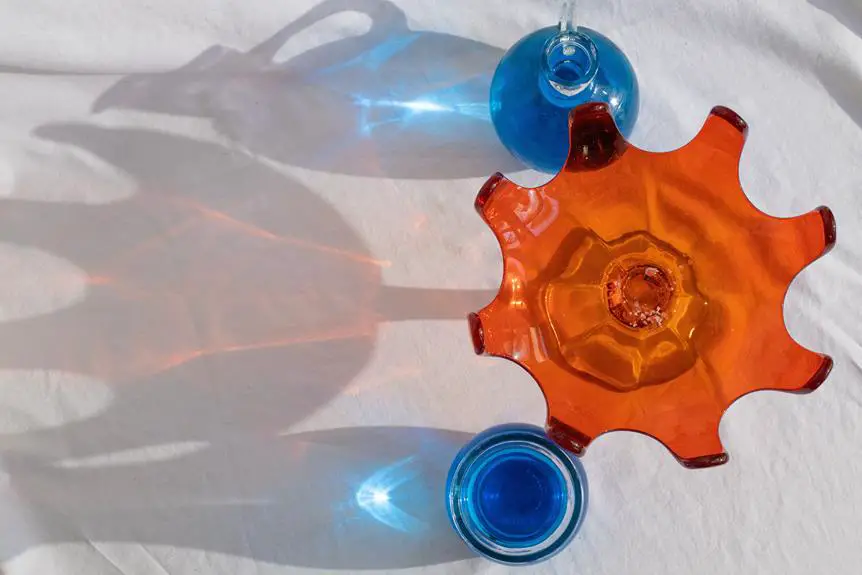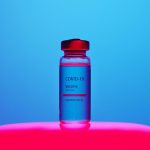Are you tired of struggling to keep your white fabrics looking bright and clean? You've probably heard the old saying, 'When in doubt, use blue.' But is blue liquid truly the ultimate savior for your white fabrics?
In this concise guide, we'll delve into the history, science, and practicality of using blue liquid in your laundry routine. By the end, you'll have a comprehensive understanding of whether this age-old trick is truly the best solution for maintaining the brilliance of your white garments.
So, let's explore the truth behind the blue liquid and its effectiveness in preserving the pristine beauty of your white fabrics.
Key Takeaways
- Blue liquid laundry detergents have a long history and were originally used as a whitening agent to counteract yellowing caused by washing and sunlight.
- The science behind blue liquid involves optical brighteners that absorb UV light and emit blue light, enzymes that help break down stains and dirt, and surfactants that lower the surface tension of water.
- While blue liquid detergents have pros such as effectiveness, ease of use, versatility, longevity, and cost-effectiveness, they also have cons including potential staining, chemical content, environmental impact, skin sensitivity, and residue.
- To use blue liquid effectively, it is important to measure the correct amount for the load size, add it to the water before adding fabric, use the recommended water temperature, avoid pouring it directly onto the fabric, and check the fabric care label for compatibility.
The History of Blue Liquid in Laundry
You may be surprised to learn that the history of blue liquid in laundry dates back to the early 1800s when it was first introduced as a whitening agent. The evolution of blue liquid in laundry care has had a significant impact on the cleanliness and brightness of white fabrics. Its popularity soared as it became an essential innovation in the quest for pristine laundry.
Initially, blue liquid, often derived from natural sources like indigo, was used to counteract the yellowing of fabrics caused by repeated washing and exposure to sunlight. This simple yet effective solution quickly gained popularity and became an integral part of laundry routines. Over time, the formula and application methods evolved, but the basic principle remained the same: to enhance the whiteness of fabrics.
The innovation of blue liquid in laundry care revolutionized the way people maintained their white garments, making it easier to achieve and maintain the desired level of cleanliness and brightness. Its enduring impact on laundry practices is a testament to its effectiveness and enduring popularity.
Understanding the Science Behind Blue Liquid
Understanding the science behind blue liquid involves delving into its chemical composition and how it interacts with fabric fibers to achieve its whitening effects. Blue liquid laundry detergents typically contain optical brighteners, which are chemicals that absorb ultraviolet light and emit blue light, making clothes appear whiter. These detergents also contain enzymes and surfactants.
Enzymes help break down stains and dirt, while surfactants lower the surface tension of water, allowing it to penetrate fabric more effectively. The blue color of the liquid serves a practical purpose— it helps to cancel out any yellowing or dinginess in white fabrics, enhancing their brightness.
The chemistry behind blue liquid detergents is fascinating. The optical brighteners work by absorbing UV light and emitting it as blue light, which makes white fabrics appear brighter and whiter. Additionally, the fabric penetration techniques, facilitated by surfactants, enable the detergent to reach and lift dirt and stains from the fibers.
Understanding this chemistry can help you make informed decisions when choosing laundry products, ensuring that your white fabrics remain bright and clean.
Pros and Cons of Using Blue Liquid
After understanding the science behind blue liquid, it's essential to weigh the pros and cons of using it for whitening your fabrics. When considering the effectiveness of using blue liquid for whitening white fabrics, it's important to also take into account the potential drawbacks.
- Pros:
- Effectiveness: Blue liquid can be highly effective in brightening and whitening white fabrics.
- Ease of Use: It's simple to use and can be added directly to the laundry load.
- Versatility: It can be used for a variety of fabrics, not just white clothing.
- Longevity: Blue liquid can help prevent yellowing of white fabrics over time.
- Cost-Effective: It can be an affordable option for whitening clothes compared to other methods.
- Cons:
- Staining: If not used correctly, blue liquid can potentially stain fabrics.
- Chemical Content: Some blue liquids may contain harsh chemicals that can be damaging to certain fabrics.
- Environmental Impact: Some blue liquids may have a negative impact on the environment.
- Skin Sensitivity: It can cause skin irritation for individuals with sensitive skin.
- Residue: Improper use can lead to a bluish residue on fabrics.
When considering the use of blue liquid for whitening white fabrics, it's important to weigh these pros and cons to make an informed decision.
Tips for Using Blue Liquid Effectively
To achieve optimal results when using blue liquid for whitening white fabrics, start by carefully measuring the recommended amount of the product. Effective application of blue liquid can significantly enhance the whiteness of your fabrics, but it's important to follow some key tips to ensure success. Common mistakes can lead to uneven whitening or fabric damage, so paying attention to the details is crucial. Here are some essential tips for using blue liquid effectively:
| Tips for Using Blue Liquid Effectively | ||||
|---|---|---|---|---|
| 1. Measure the correct amount of blue liquid for the load size. | ||||
| 2. Add the blue liquid to the water before putting in the fabric. | ||||
| 3. Use the recommended water temperature for best results. | ||||
| 4. Avoid pouring the blue liquid directly onto the fabric. | ||||
| 5. Always check the fabric care label to ensure compatibility. |
Myth Busting: Blue Liquid Vs. White Fabrics
You can debunk the myth that blue liquid is the ultimate savior for white fabrics by examining its actual effectiveness in comparison to other whitening products. When it comes to fabric care and stain removal, it's important to look beyond marketing claims and consider the real results.
Here's what you need to know about blue liquid vs. white fabrics:
- Chemical Composition: Blue liquid often contains optical brighteners which can create an illusion of whiteness but may not necessarily remove stains effectively.
- Stain Specificity: Different stains may require specific treatments, and blue liquid may not be the best option for all types of stains on white fabrics.
- Fabric Sensitivity: Some white fabrics are sensitive to certain chemicals, and blue liquid may not be suitable for all fabric types.
- Environmental Impact: Consider the environmental impact of using blue liquid and explore alternative eco-friendly whitening products.
- Long-Term Effects: Assess the long-term effects of using blue liquid on the durability and brightness of white fabrics, and compare it with other whitening methods.
Frequently Asked Questions
Can Blue Liquid Be Used on Colored Fabrics or Is It Only Suitable for White Fabrics?
Blue liquid can be used on colorfast fabrics, but it's important to check the label for fabric compatibility. Its effectiveness for stain removal may vary, so it's advisable to test on a small, inconspicuous area first.
Is Blue Liquid Safe to Use on Delicate Fabrics Such as Silk or Wool?
When caring for delicate fabrics like silk, it's essential to use gentle detergents that are wool-friendly. Blue liquid detergents can be safe for silk care if they are formulated to be wool-friendly. Always check the label for specific fabric recommendations.
How Does Blue Liquid Compare to Other Stain Removal Products on the Market?
When comparing blue liquid to other stain removal products, it's important to consider effectiveness, safety, and fabric compatibility. Some recommended brands excel in these areas, offering superior results for various types of stains and fabrics.
Can Blue Liquid Cause Any Adverse Effects on the Washing Machine or Other Laundry Appliances?
Using blue liquid for white fabrics may not only harm your washing machine but also damage other laundry appliances. The chemicals in the liquid can cause potential damage, so it's important to use it carefully.
Are There Any Specific Brands or Types of Blue Liquid That Are Recommended for Different Types of White Fabrics (E.G. Cotton, Polyester, Etc.)?
When it comes to white fabrics, using the right blue liquid is essential. Different fabric types require specific brands for optimal results. Consider the effectiveness of blue liquid and its suitability for various color fabrics.
- How Does Ring Spun Cotton Affect Garment Fit and Shape Retention? - August 13, 2024
- What Are the Challenges in Producing Ring Spun Cotton? - August 13, 2024
- Is Ring Spun Cotton Suitable for Plus-Size Clothing? - August 13, 2024







